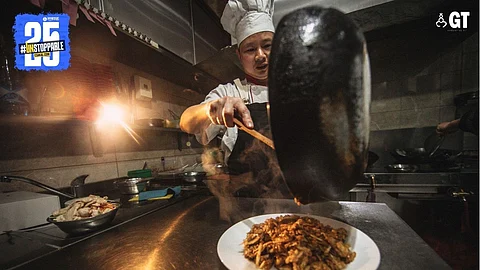

Somebody once rightly wrote, ‘Good food, good company, great memories’. Food is an important essence of tourism. Wherever one goes, one returns with memories of the food because the cuisine is a reflection of the spirit of the place one visits.
People travel, not just to see a place, but also to feel the vibes shared by the locals and the food imbibed. Most people don’t live to eat, but that does not mean they can’t appreciate a good dish.
The cuisine of a place is a reflection of the mood of the people and the more complex the taste, the more exciting the people who not only prepare it, but also relish it.
Good food, they say, comes from good hands. It is the spirit in the hands that determines the taste of the dish, and the end product is a reflection of the mood within the hands.
Eating is something special in Goa. The food prepared at home is the product of love that flows within families, and most times, nurtured by parents. It is this emotion that flows in most restaurant kitchens that are still managed by locals.
It is how once caresses, what is being prepared, that decides the tenderness of what we all end up eating. Finally, the dish represents the emotion that flowed in the kitchen.
Eating is something special in Goa. The food prepared at home is the product of love that flows within families, and most times, nurtured by parents. It is this emotion that flows in most restaurant kitchens that are still managed by locals.
There was a time when most restaurant kitchens in Goa were managed by Goans. The ladies would rule the kitchens, or there were kitchens where the male dominated, but, it really did not matter because the end products were always sumptuous.
Cooks can be found all over Goa, but amongst the various corners, there were Curtorim and Chandor in South Goa, two villages where one could taste the best curries, and that explains why most cooks in ships hailed from these two places.
Cooks can be found all over Goa, but amongst the various corners, there were Curtorim and Chandor in South Goa, two villages where one could taste the best curries, and that explains why most cooks in ships hailed from these two places.
In the past, many restaurants employed cooks from these two villages. Times change, and so do styles of cooking, but the essence always remains the same.
Goa has reached a stage where there are few good cooks remaining within the State, cooks who are able to give guests a taste of the past. Instead, most kitchens today are handled by people from North India, and that has left taste buds disappointed.
Ninety per cent of kitchens in shacks are managed by people from the north, and that could be because a great number of shacks are no longer run by locals — they may do so only on paper.
Similar is the case with most restaurants, except for the few that are struggling to keep the spirit of Goa burning through their kitchens.
Many locals are working abroad or on ships and a few in private kitchens in the Gulf. There are many who have passed out from institutes of hotel management, but for many of them, Goan cuisine is of secondary importance.
Many locals are working abroad or on ships and a few in private kitchens in the Gulf. There are many who have passed out from institutes of hotel management, but for many of them, Goan cuisine is of secondary importance.
The taste of Goa will always remain in the hands of Goans. Wherever we go, there the taste will follow. That is a spirit that cannot be separated.
People will come to experience the spirit of Goa, but it will never be authentic. That does not mean that we can just wait and watch because good memories flow from good times borne by hard work.